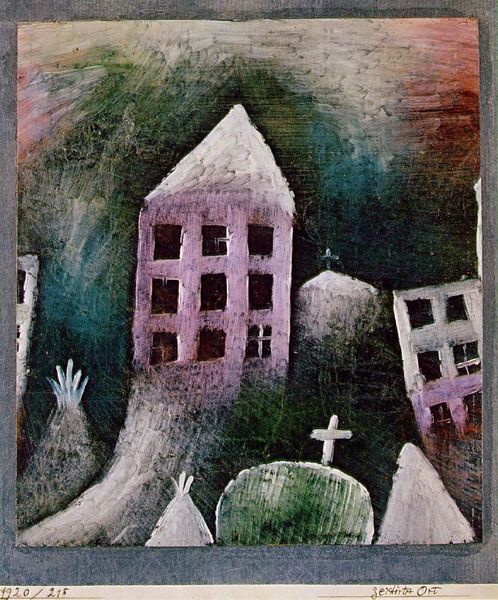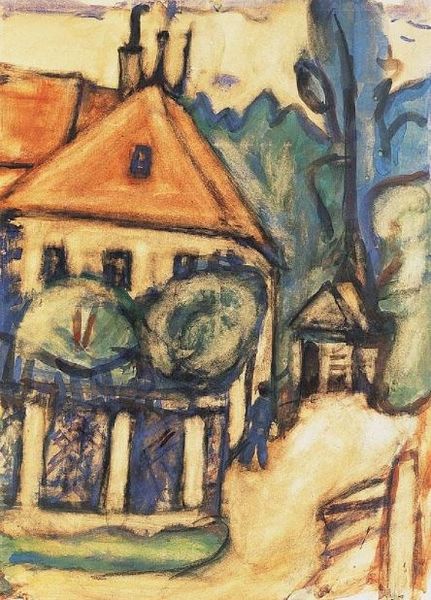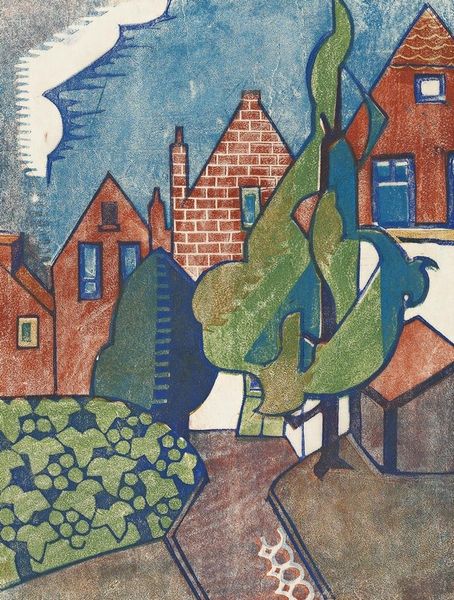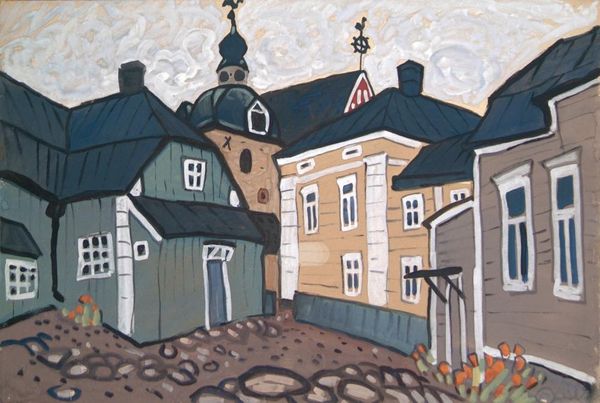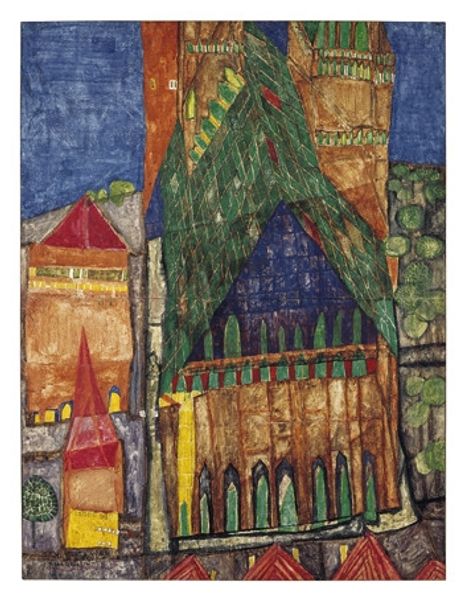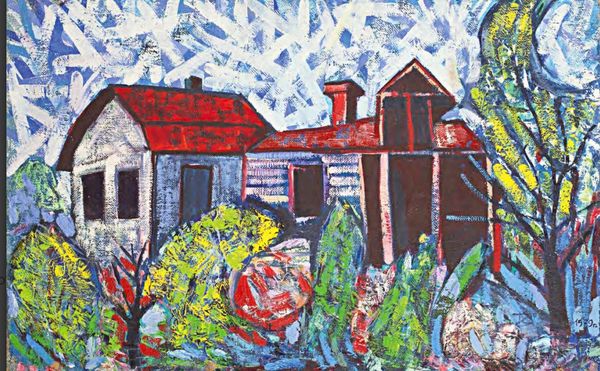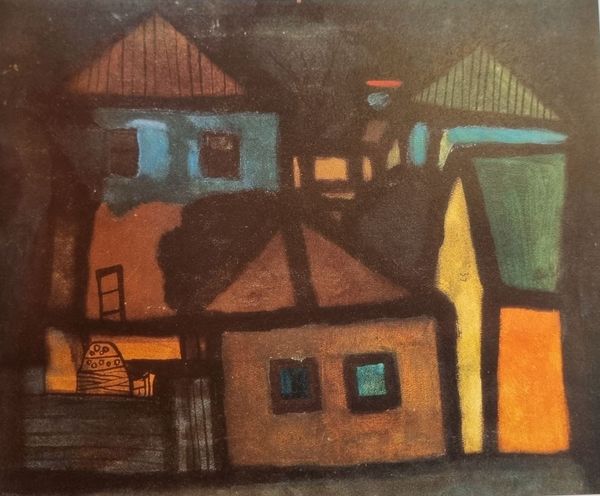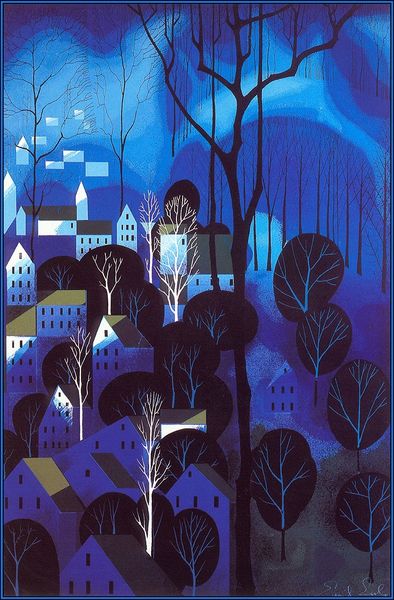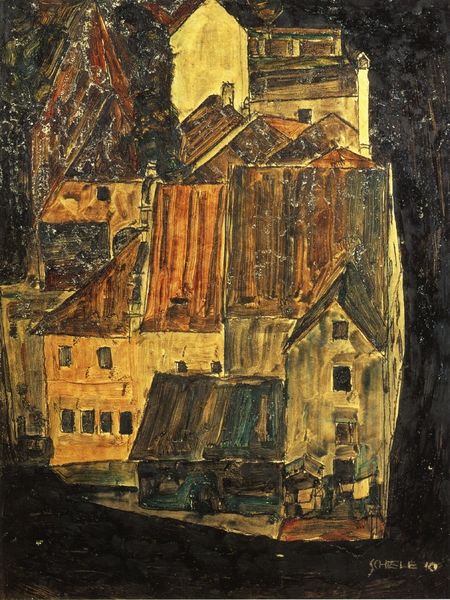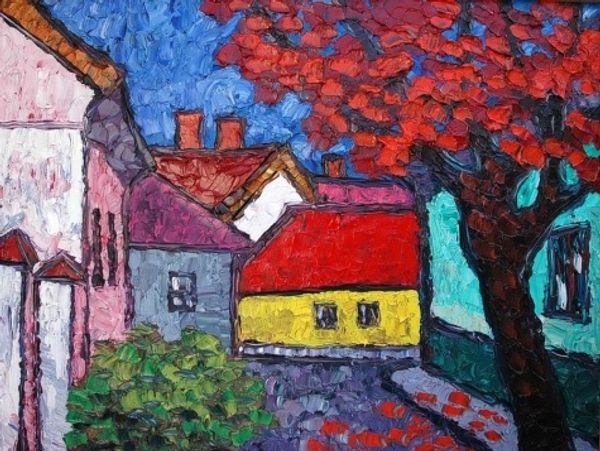
painting, acrylic-paint
#
painting
#
landscape
#
acrylic-paint
#
naïve-art
#
naive art
#
cityscape
#
modernism
Copyright: Vudon Baklytsky,Fair Use
Editor: So, this is Vudon Baklytsky's "Makariivska Church in Tatarka. Moon over the City," created in 1989. It's an acrylic painting, and it gives me a really unsettling, dreamlike feeling, almost like a child's drawing of a haunted house. What do you see in this piece? Curator: The church, rendered in a naïve style, emerges as a potent symbol. Consider its persistent presence across centuries – often a focal point for communal identity, belief, and even resistance. Baklytsky's choice to depict it beneath a dominant moon, surrounded by what appears to be either bare branches or some sort of web-like structure, evokes a fascinating tension. Editor: Tension how? It just seems kind of… weird. Curator: Weird, yes, but intriguing, no? Think about the period. 1989. What major societal shifts were happening in Ukraine then? This could be interpreted as the church bathed in the stark light of revelation as old structures decay—illuminating a path through uncertainty. What emotional weight might the church, and indeed, the moon, hold for Ukrainians grappling with seismic change? The artist doesn't give an answer, merely stages the question. Editor: Oh, I see. The moon could be seen as a sort of witness. And the web...maybe that represents the old order, like something that has been abandoned? Curator: Precisely! The tree too, with its autumn hues, reminds us of cycles, change, and transition. It seems deliberately placed to draw your attention back to Earth even as the Church's tower reaches for the Heavens. So, it might be more than weird, after all. Editor: Definitely more than weird! Now I see all sorts of stories here. It makes me think about the weight of history. Thanks for opening my eyes to it. Curator: My pleasure. It's through the layering of symbols that artworks begin to really speak. And, like all art, it remains for each viewer to decode based on their own knowledge and experience.
Comments
No comments
Be the first to comment and join the conversation on the ultimate creative platform.

